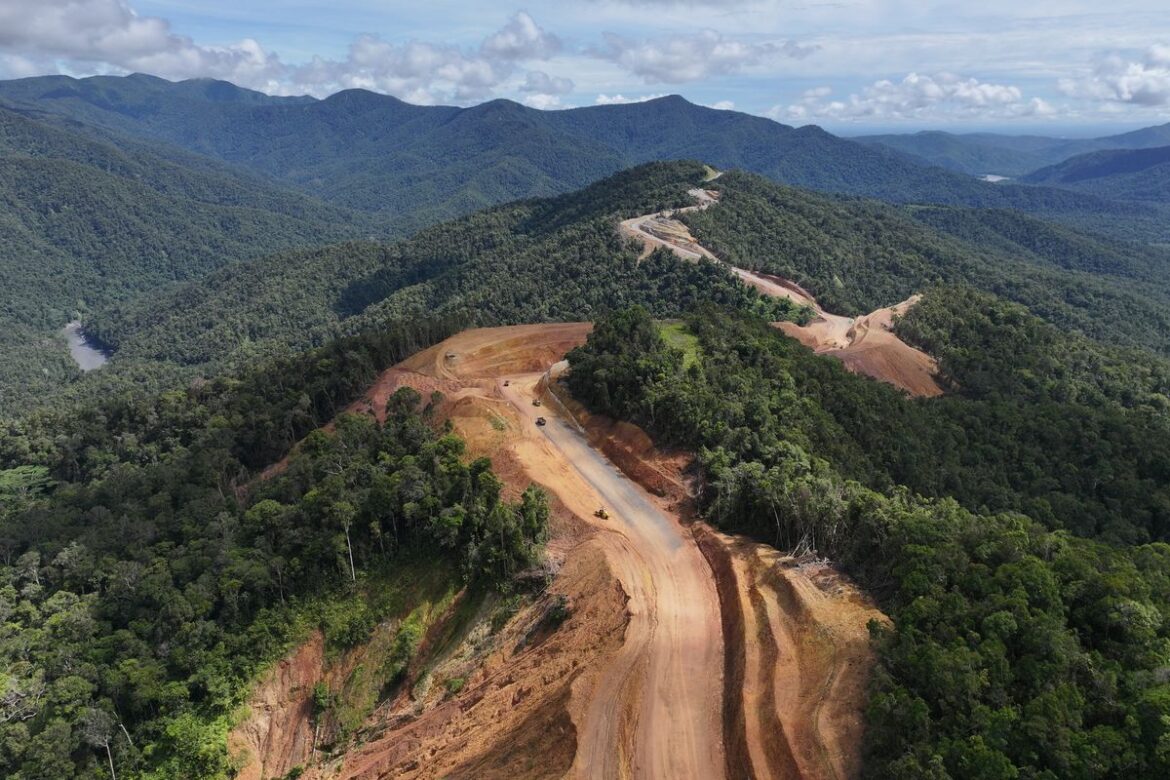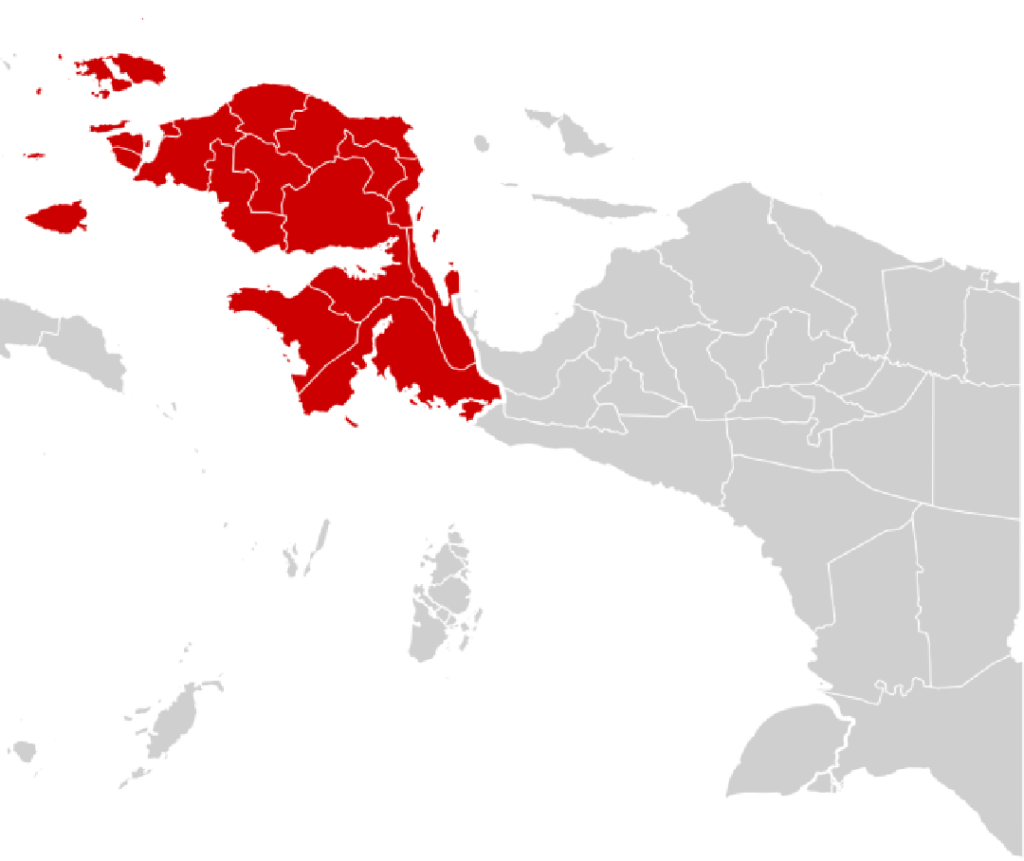In the lush, mountainous interior of Papua, where valleys stretch into deep forests and rivers carve their way through rugged terrain, access has always been a challenge. For decades, local communities in the Mamberamo Raya and Yalimo districts have relied on small aircraft, riverboats, or treacherous dirt paths to move between villages and towns. Now, a historic step has been taken: the Government of Indonesia, through the Ministry of Public Works, in collaboration with state-owned company PT Hutama Karya, has officially begun construction on the Trans Papua Road Jayapura–Wamena segment, specifically the Mamberamo–Elelim section spanning 50.14 kilometers.
This ambitious infrastructure project, part of the long-envisioned Trans Papua Road, promises to transform not only Papua’s connectivity but also its economy, social integration, and access to basic services.
The Dream of Connectivity: From Suharto’s Era to Today
The idea of connecting Papua’s coastal capital, Jayapura, to its highland hub, Wamena, is not new. As far back as the 1980s, the late President Suharto envisioned a road network that could reduce Papua’s dependency on expensive air transport. The vision was bold but technically daunting. Papua’s terrain—marked by steep mountains, unstable soils, and frequent rains—posed enormous engineering challenges.
For decades, progress was slow. Segments of the Trans Papua Road were built in phases, often disconnected from one another. But with the government’s renewed focus on eastern Indonesia and its infrastructure gaps, the Mamberamo–Elelim project is becoming a reality.
According to official data, this segment will cost approximately Rp3.3 trillion and involve 28 percent local Papuan workers, ensuring that benefits extend beyond construction to employment and skills transfer.
Why This Road Matters for Papua
For most Papuans, transportation is more than just about convenience—it is about survival. Basic goods in Wamena, such as rice, cooking oil, or cement, can cost three to five times more than in Jayapura due to reliance on air freight. A sack of rice that sells for Rp200,000 on the coast could reach Rp700,000 in the highlands.
By opening up land access, the Trans Papua Road will:
- Lower logistics costs for food and building materials.
- Improve market access for farmers in the highlands, allowing them to sell coffee, sweet potatoes, and vegetables to coastal markets.
- Strengthen health and education access by making it easier for teachers, doctors, and supplies to reach remote areas.
- Foster economic integration between Papua’s coastal and highland regions.
The 50.14 km Mamberamo–Elelim stretch is not just about asphalt and bridges—it is about bridging inequality.
Engineering Challenges in Papua’s Terrain
Papua is known as one of the most difficult places in the world for road construction. The Mamberamo–Elelim segment crosses deep river valleys, dense rainforests, and landslide-prone mountains. Engineers must construct bridges, drainage systems, and retaining walls to prevent erosion.
To minimize ecological disruption, the project also integrates green construction practices, ensuring that surrounding biodiversity—Papua’s greatest treasure—is preserved. PT Hutama Karya, which leads the project, has emphasized environmental safeguards, a critical step given global scrutiny of infrastructure in sensitive ecosystems.
Local Workforce and Community Impact
One of the most encouraging aspects of this project is the involvement of local Papuans. Reports indicate that nearly one-third of the workforce comes from nearby districts, giving them valuable construction experience and income opportunities.
Community leaders have welcomed this approach. For years, Papua’s development projects have been criticized for sidelining locals. By integrating Papuans directly into the workforce, the project not only builds a road but also builds local capacity and trust.
Villagers along the planned route are already anticipating the benefits. Farmers in Elelim say that once the road opens, they will finally be able to transport their sweet potatoes to Jayapura in a matter of hours instead of relying on costly flights. For young people, the road may bring access to jobs, higher education, and opportunities previously out of reach.
The Economic Ripple Effect
Infrastructure is often called the backbone of development. In Papua, the ripple effects could be transformative:
- Agriculture Boost
Highland farmers produce commodities like coffee, sweet potatoes, and vegetables. With better road access, they can reach coastal markets more easily, ensuring fairer prices and reducing post-harvest losses.
- Tourism Opportunities
Papua is home to stunning landscapes—from Lake Habema to the Baliem Valley. Road connectivity could boost ecotourism and cultural tourism, especially if developed sustainably.
- Trade and Investment
With a reliable road network, businesses may finally consider investing in Papua’s highlands, from retail to processing industries.
- Cost of Living Reduction
Lower transportation costs mean more affordable food and goods, helping to curb inflation and improve living standards.
Government Commitment and Public-Private Collaboration
The Mamberamo–Elelim project is part of a Public-Private Partnership (PPP) model, with PT Hutama Karya as the main operator under the government’s guidance. Such partnerships are crucial for funding and sustaining large-scale infrastructure in challenging regions like Papua.
The government has reiterated that Trans Papua is not merely about physical connectivity—it is about social justice and equal development. Minister of Public Workers Dody Hanggodo emphasized that infrastructure is key to reducing regional disparities and bringing prosperity to all Indonesians, including those in the farthest provinces.
Balancing Development with Environment and Culture
While enthusiasm for the project is high, experts warn that infrastructure in Papua must tread carefully. The region is one of the world’s most biodiverse ecosystems, home to endemic species and fragile rainforests. Additionally, Papuan culture and land rights must be respected during construction.
Civil society groups have called for ongoing dialogue with local communities, ensuring that the benefits are shared and that cultural heritage sites remain protected. If managed inclusively, the road could become a model for development that respects both people and nature.
Voices from the Ground
Local officials have expressed optimism. The Regent of Yalimo, for instance, noted that the road would significantly reduce isolation and open up new opportunities for education and healthcare. Meanwhile, community elders in Mamberamo Raya expressed hope that their children would finally experience the same access to services as Indonesians in other provinces.
For many, the project is more than an engineering milestone—it is a symbol of integration, a promise that Papua is no longer left behind.
Looking Ahead: A Road to Prosperity
The Mamberamo–Elelim segment is just one piece of the puzzle. The full Trans Papua Road aims to stretch over 3,000 kilometers, linking multiple districts across the island. Each completed section brings Indonesia closer to realizing a vision of equal connectivity.
If the road fulfills its promise, the transformation could be profound: lower prices, stronger markets, better services, and a sense of belonging for Papuans within the broader Indonesian narrative.
Conclusion
As bulldozers carve their way through the mountains of Papua, the sound of engines echoes with a deeper meaning. This is not just about building a road—it is about building hope, equity, and opportunity.
The Trans Papua Jayapura–Wamena Road, Mamberamo–Elelim Segment, stands as a milestone in Indonesia’s effort to balance development between the western and eastern regions of the archipelago. With every kilometer paved, Papua moves closer to breaking free from isolation and stepping into a future where connectivity fuels prosperity.


